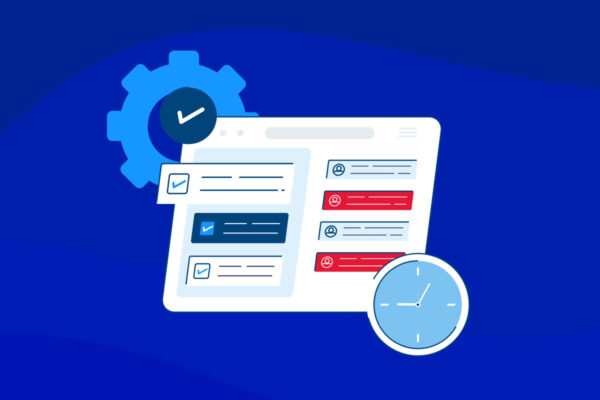Co-Managed IT: Transform Your IT Services With New Capabilities
The increasing complexity of today’s modern IT environments has forced business organizations to transform their IT with scalable, cost-effective solutions that can be beneficial in the long run. Businesses need the flexibility of internal IT teams and the expertise of managed services. How about a service that combines both? The answer lies in co-managed IT services, which bring both worlds together in a unified platform.
In this blog, we will explore the basics of co-managed IT services and how business organizations and MSPs can benefit from them.
What are co-managed IT services?
Co-managed IT service is a customized IT service model that combines the convenience of an internal IT department with the expertise of a managed service provider (MSP). Under this model, technicians from internal IT teams collaborate with MSPs to divide their roles and responsibilities based on technology, skill gaps or expertise.
The whole idea behind outsourcing certain services to an MSP is to create an ongoing partnership that supplements the existing IT team without building everything from the ground up. Most importantly, it allows businesses to reap the benefits of managed IT services within their limited resources and budget.
How is co-managed IT different from traditional managed IT services?
In managed IT services, the provider assumes full responsibility for anything within an organization’s IT infrastructure. However, in co-managed IT, the responsibilities are limited to the services an MSP offers.
Co-managed IT services may take many forms based on the type of services offered. For instance, a company may outsource its help desk support to an MSP. Sometimes, companies use MSPs only to manage their networks and monitor security. In co-managed IT, a company requires the services of an MSP only when its internal IT department doesn’t have the time or skills to manage them on its own.
How does co-managed IT work?
Technology is the backbone of any business organization in today’s scenario. If you are a business that experiences accelerated growth, you need the right technology to handle the increase in IT workload. Building everything from the ground up is time-consuming and may not be feasible. In such cases, co-managed IT is your best bet to prevent you from overwhelming your IT department.
When such a need arises, business organizations contact MSPs to handle some of their IT operations. Before signing up for a co-managed IT service, you must review your existing IT environment to identify what you’re missing.
You must analyze the following items before you start:
- Your existing technology, toolkit, workforce, skill gap, etc.
- The services you need to help with
- Your business goals and how IT plays a role in achieving them
- A list of potential MSP partners who can help you fill the gap
Once you have analyzed these factors, it is time to reach out to a managed service provider for your needs. Co-managed IT provides the flexibility you need for managing your IT. Ensure you choose the right partner to help you with your technology requirements.
What services does co-managed IT cover?
MSPs can offer a wide range of services under co-managed IT. The key lies in identifying the best possible services to fill your IT gaps while helping you achieve your business goals. Here is a list of key services covered under co-managed IT:
- Project management: The staff in your internal IT departments may have solid IT skills. However, they may not be well-versed in project planning and management. When you use an experienced MSP for project management, you can leverage the services of experts to manage projects of all sizes and allow your staff to focus on individual projects that contribute to your business.
- End-user support: This refers to the first line of support offered when a user encounters a problem. Here, technicians need expertise in assisting users on a timely basis. By outsourcing this key service to an MSP, you can reduce the workload of your IT staff and have a reliable way to prevent IT disruptions.
- Digital transformation: Transforming your IT operations to keep up with new-age technologies is not an easy task for small and mid-sized organizations. Partnering with an industry expert will help you achieve this transformation quickly without bringing your business to a halt.
- Contract-based IT resources: Finding the right IT talent is a significant concern for organizations of all sizes. If you can’t find the right talent for specific IT tasks, you can outsource it to an IT services contractor to get talented resources. This can give you access to a vast talent pool without spending too much time on employee search.
- Access to enterprise tools: Many businesses usually don’t have the budget to invest in sophisticated tools to expand their IT infrastructure. However, the right tool stack can give them a competitive advantage over their peers in the market. If you face such an issue, you can use the services of the right MSP to access robust enterprise tools.
- IT security: Security is a massive concern for businesses in today’s complex IT world. If you don’t want to risk facing cybercriminals alone with their sophisticated and modern tools, you may consider outsourcing it to an MSP specializing in security. The right partner can provide relief by taking care of your digital assets and overall IT infrastructure.
- IT consulting: Even if you have enough resources to manage your IT needs, you may still need help with certain areas such as knowledge transfer, employee training, performance analysis, strategy building, etc. You can outsource these services to an expert MSP and improve your business performance.
What are the advantages of co-managed IT?
Here is a list of reasons business organizations should consider co-managed IT services:
- Control over existing IT operations: With co-managed IT services, organizations can retain complete control over their IT operations. You can select a partner only for the services where you need help.
- 24×7 IT support: Businesses that opt for a co-managed IT model can depend on their IT service partners for support. Even when short-staffed for holidays, they can ask for temporary resources from their partners.
- Customized services: In a co-managed IT services model, businesses can receive customized IT support tailor-made to their specific requirements. They can pick one or multiple IT service partners to fill their technology or skill gaps based on their needs.
- Instant implementation: Co-managed IT services can be implemented instantly without wasting time. Businesses don’t have to start from the ground up with all the hiring, onboarding and training required for new staff when starting a project.
- Cost-effective: In many cases, co-managed IT services proved highly cost-effective for businesses. Since businesses don’t have to go through the trouble of building their own IT infrastructure, they don’t have to invest heavily in new software solutions, workforce and other technologies.
- Reduced workload and better morale: Internal IT teams often get overloaded with new tasks to keep up with the demands of the modern business environment. As a result, employees have to overwork and may get frustrated easily. Having external help to share their workload makes their job easier and contributes to better morale.
What are the disadvantages of co-managed IT?
Despite various advantages, co-managed IT is not without its limitations. Here is a list of cons businesses must be wary of when opting for the co-managed IT model:
- Conflict between internal staff and MSP: When two groups work on similar jobs, there tends to be a little friction between them. The internal IT team may feel insecure about the presence of an external team taking away their jobs. This can be avoided if the management sets clear expectations regarding internal and external IT staff roles.
- Finding the right MSP: Finding the right MSP partner is often easier said than done. Businesses must find one that complements their existing technology and business goals. Also, the right MSP partner should be experienced, agile, skillful and tech-savvy.
- Compatibility issues: Even if businesses find the right MSP with the desired skillset, compatibility issues may arise when the work starts. The MSP’s software solutions may not always align with a business and its needs. These issues should be addressed way early in the process before it affects business continuity.
- Upfront costs: Although co-managed IT can be cost-effective in the long run, it requires a lot of upfront investments. Businesses on a tight budget may have to explore these costs before committing to a new solution.
What challenges does co-managed IT address?
For MSPs as well as SMBs, co-managed IT helps in managing various challenges people face every day. Be it cybersecurity or downtime issues, co-managed IT can help a business operate without many disruptions. MSPs can use co-managed services to increase their customer base and generate additional revenue. Here are some of the challenges addressed by co-managed IT.
SMB challenges
- Difficulties in hiring tech talent
- Accelerated business growth
- Need for new technologies within a short time frame
- Need for expertise in only specific IT specializations
- An inexperienced IT team that needs help from experts
MSP challenges
- Responsibilities of full-fledged managed services
- Access to a wider customer base
- Additional ways to increase MRR
How is the co-managed IT model beneficial to MSPs?
MSPs can enjoy a lot of advantages by offering co-managed services. Here are a few co-managed advantages for MSPs:
- The MSP can sell through the license to a customer.
- It enhances collaboration and mutual assistance between an MSP and an organization through shared knowledge and skill sets.
- Co-managed IT saves MSPs the trouble of on-site work.
- It increases loyalty between MSPs and their customers.
- MSPs can offload certain work to internal IT teams when the need arises.
Embrace co-managed IT services with Autotask
Autotask is a solution uniquely positioned to support the complex relationships of co-managed IT services. Autotask PSA can increase your co-managed IT service capabilities by building efficiency into standard processes and providing a clear view of client systems. It can also be configured to a client’s internal IT teams to help drive their productivity.
To learn more about how you can leverage Autotask for co-managed IT services, request a demo.


